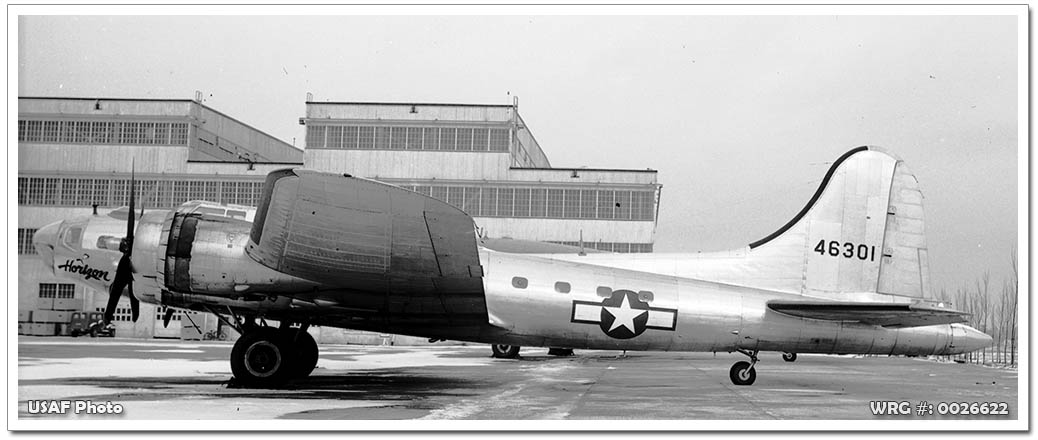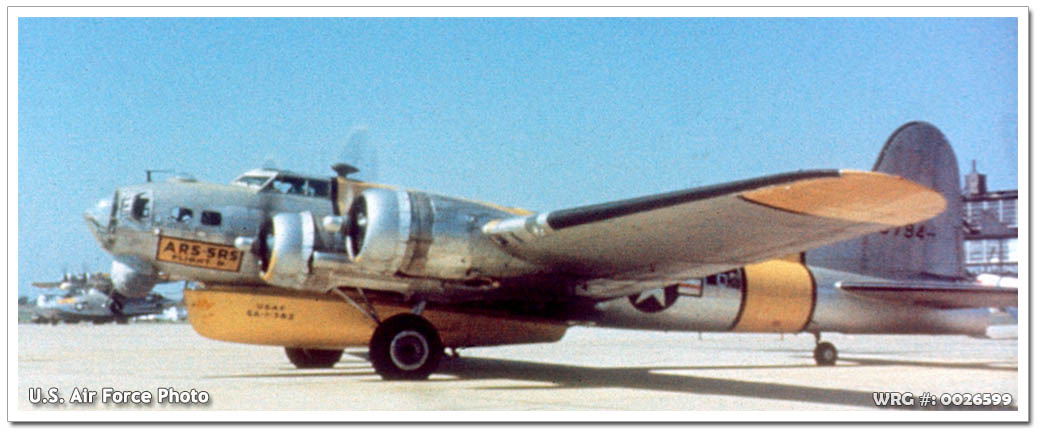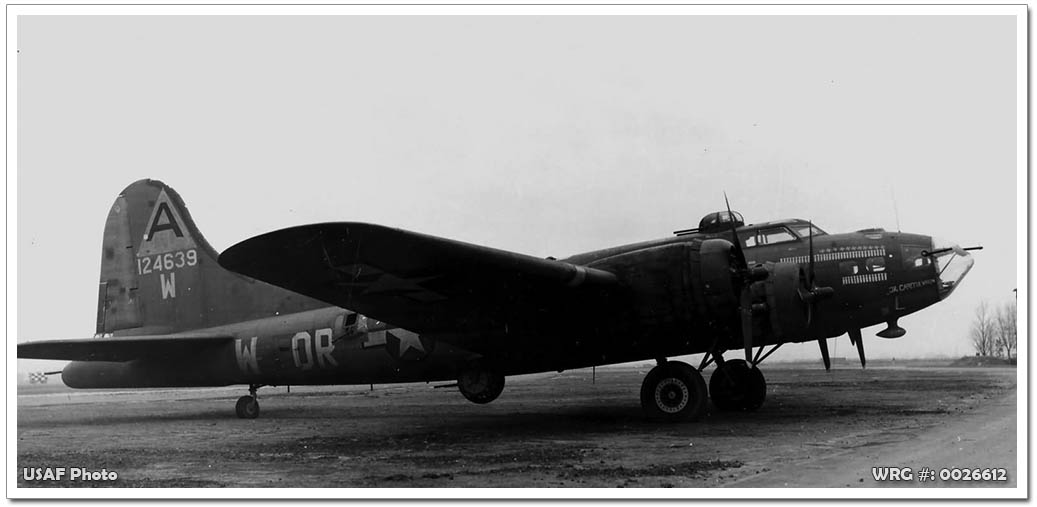U.S.A.A.F. RESOURCE CENTER > BOMBERS > FLYING FORTRESS > VARIANTS > PREVIOUS PAGE
Variants - B-17G
CB-17G: Troop transport version, capable of carrying 64 troops. 25 Built.

Boeing CB-17G-50-DL Flying Fortress/44-6301, at Patterson Field, OH on January 1, 1946.
[Source: USAF Photo]
JB-17G: Engine test-bed.
QB-17L: Target drone.
QB-17N: Target drone.
RB-17G: Reconnaissance variant.
SB-17G: Rescue version, later redesignated B-17H. Featured A-1 lifeboat under fuselage. After World War II, armament on the B-17Hs was removed; it was reinstated when the Korean War began.

A U.S. Air Force Air Rescue Service Boeing SB-17G Flying Fortress of the 5th Rescue Squadron
before takeoff for the next rescue mission during the Korean War.
Note the Consolidated OA-10A Catalina (PBY) in the background.
National Museum of the U.S. Air Force photo 100617-F-1234S-008
VB-17G: VIP transport.
PB-1: This designation was given to one B-17F and one B-17G. They were used by the U.S. Navy for various test projects.
PB-1G: This designation was given to 17 B-17Gs used by U.S. Coast Guard as air-sea rescue aircraft.
PB-1W: This designation was given to 31 B-17Gs used by the U.S. Navy as the first airborne early warning aircraft/ AWACS.

B-17F Flying Fortress/41-24639 of the 91st BG/322nd BS.
[Source: USAF Photo]
Produced: 8,680 (-BO x 4,035/-DL x 2,395/-VE x 2,250)
Sources:
Wikipedia
U.S.A.A.F. RESOURCE CENTER > BOMBERS > FLYING FORTRESS > VARIANTS > PREVIOUS PAGE
